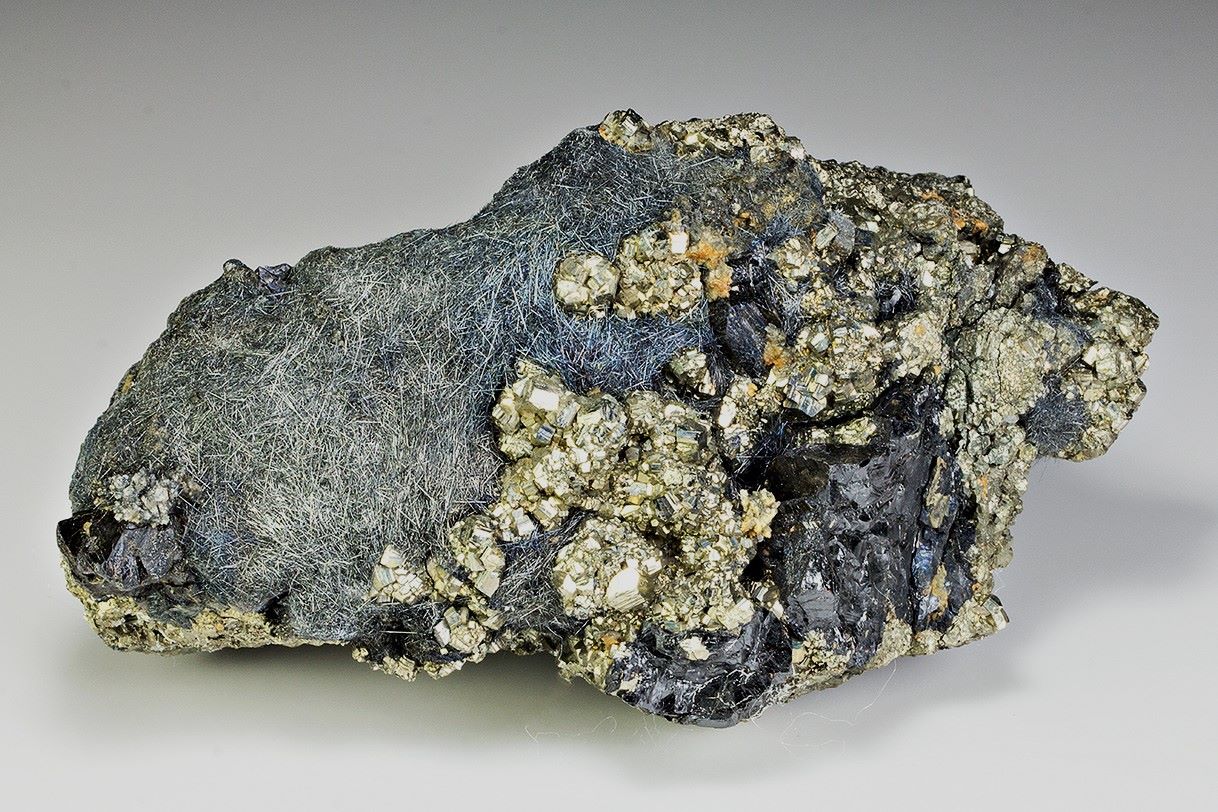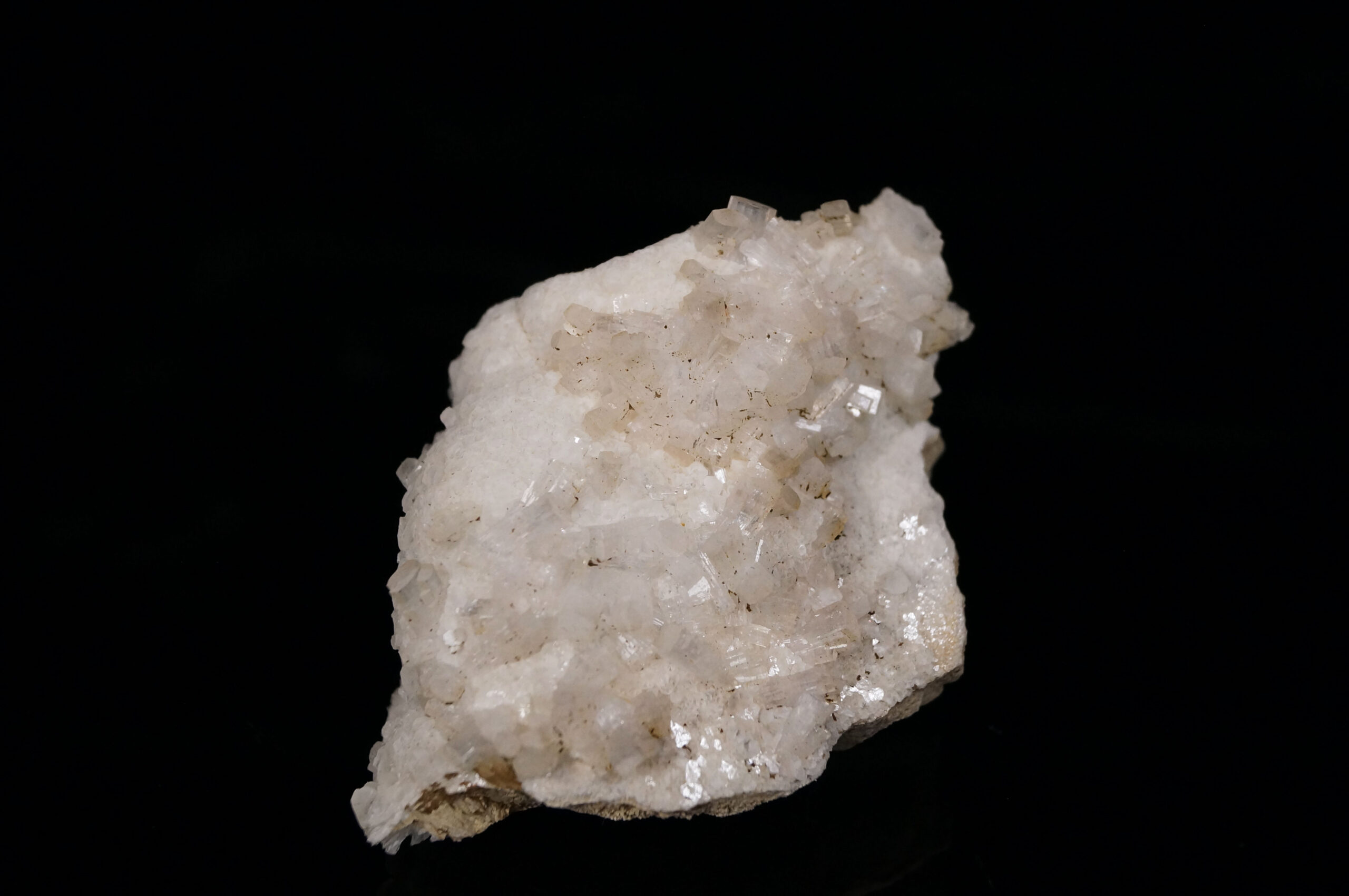
Boulangerite is a fascinating mineral with a rich history and unique properties. Named after French mining engineer Charles Boulanger, this mineral is a sulfosalt composed primarily of lead, antimony, and sulfur. Boulangerite often forms in fibrous, hair-like crystals, giving it a distinctive appearance that has intrigued geologists and collectors alike. Found in hydrothermal veins, it typically associates with other minerals like galena, sphalerite, and pyrite. Its metallic luster and dark gray to black color make it easily recognizable. Beyond its visual appeal, boulangerite has practical applications in the mining industry, particularly in the extraction of lead. Whether you're a geology enthusiast or just curious about minerals, these 40 facts about boulangerite will deepen your understanding of this intriguing substance.
Key Takeaways:
- Boulangerite, a unique mineral with lead and antimony, has historical significance and is used in scientific research. Its fibrous crystals and environmental risks make it a fascinating subject for study and collection.
- Boulangerite, also known as "plumosite," has diverse applications in history, from industrial uses to modern research in nanotechnology. Its complex structures and potential in materials science continue to intrigue scientists.
What is Boulangerite?
Boulangerite is a fascinating mineral with a rich history and unique properties. Named after French mining engineer Charles Boulanger, this mineral has intrigued scientists and collectors alike. Let's dive into some intriguing facts about Boulangerite.
-
Boulangerite is a sulfosalt mineral composed primarily of lead, antimony, and sulfur.
-
Its chemical formula is Pb5Sb4S11, indicating the presence of five lead atoms, four antimony atoms, and eleven sulfur atoms.
-
This mineral typically forms in hydrothermal veins, where hot, mineral-rich water flows through cracks in rocks.
-
Boulangerite often appears as fibrous or acicular (needle-like) crystals, giving it a distinctive look.
-
The color of Boulangerite ranges from dark gray to black, sometimes with a metallic luster.
Historical Significance of Boulangerite
Boulangerite has been known and studied for centuries. Its historical context adds depth to its scientific importance.
-
The mineral was first described in 1837 by French mineralogist Armand Lévy.
-
It was named in honor of Charles Boulanger, who made significant contributions to mining engineering.
-
Early miners often mistook Boulangerite for other lead minerals due to its similar appearance.
-
Boulangerite was historically mined for its lead content, which was used in various industrial applications.
-
In the 19th century, Boulangerite was a key mineral in the study of sulfosalts, helping scientists understand their complex structures.
Physical Properties of Boulangerite
Understanding the physical properties of Boulangerite can help in identifying and studying this mineral.
-
Boulangerite has a Mohs hardness of 2.5 to 3, making it relatively soft compared to other minerals.
-
It has a specific gravity of 5.8 to 6.1, indicating it is quite dense.
-
The mineral exhibits perfect cleavage in one direction, meaning it can easily split along certain planes.
-
Boulangerite is opaque, meaning light does not pass through it.
-
When broken, Boulangerite often shows a splintery or fibrous fracture.
Occurrence and Locations
Boulangerite can be found in various locations around the world, each with unique geological settings.
-
Significant deposits of Boulangerite are found in France, Germany, and the Czech Republic.
-
In the United States, notable occurrences are in Colorado and Idaho.
-
Boulangerite is often found in association with other minerals such as galena, sphalerite, and pyrite.
-
The mineral is typically found in low-temperature hydrothermal veins.
-
Boulangerite can also occur in metamorphic rocks, formed under high pressure and temperature conditions.
Uses and Applications
While not as widely used today, Boulangerite has had various applications throughout history.
-
Historically, Boulangerite was an important source of lead for industrial uses.
-
The lead extracted from Boulangerite was used in the production of batteries, pipes, and pigments.
-
Antimony from Boulangerite was utilized in flame retardants, alloys, and electronics.
-
Today, Boulangerite is primarily of interest to mineral collectors and researchers.
-
Its unique crystal formations make it a popular specimen for educational purposes.
Environmental and Health Considerations
Handling and mining Boulangerite come with certain environmental and health risks.
-
Boulangerite contains lead, which is toxic and can cause serious health issues if ingested or inhaled.
-
Mining operations involving Boulangerite must follow strict regulations to prevent lead contamination.
-
Proper protective equipment is essential for those working with Boulangerite to avoid exposure to lead and antimony.
-
Disposal of Boulangerite waste must be managed carefully to prevent environmental pollution.
-
Despite its risks, Boulangerite remains a valuable mineral for scientific study and collection.
Interesting Facts About Boulangerite
Beyond its scientific and historical significance, Boulangerite has some intriguing and lesser-known aspects.
-
Boulangerite is sometimes referred to as "plumosite" due to its feather-like crystal formations.
-
The mineral can exhibit a phenomenon known as "chatoyancy," where it appears to change color when viewed from different angles.
-
Boulangerite crystals can grow up to several centimeters in length, though they are usually much smaller.
-
In some cases, Boulangerite can form intricate, tree-like structures known as "dendrites."
-
The mineral's fibrous nature makes it challenging to cut and polish for use in jewelry.
Boulangerite in Modern Research
Modern technology and research methods continue to uncover new insights about Boulangerite.
-
Advanced imaging techniques have revealed the complex internal structures of Boulangerite crystals.
-
Researchers are studying Boulangerite to better understand the formation of hydrothermal mineral deposits.
-
The mineral's unique properties make it a subject of interest in materials science and engineering.
-
Boulangerite is being investigated for potential applications in nanotechnology and electronics.
-
Ongoing studies aim to find safer ways to handle and process Boulangerite, minimizing its environmental and health risks.
The Final Word on Boulangerite
Boulangerite, a fascinating mineral, has a lot to offer. Its unique crystal structure and metallic luster make it a standout in the world of minerals. Found in various locations worldwide, it’s often associated with other minerals like galena and sphalerite. This mineral's lead-antimony composition gives it distinct properties that intrigue both geologists and collectors.
Understanding boulangerite helps us appreciate the complexity of Earth's geology. Whether you're a student, a hobbyist, or a professional, knowing these facts can enhance your knowledge and spark curiosity. Keep exploring the world of minerals; there's always something new to learn. Boulangerite is just one piece of the puzzle, but it’s a piece that adds depth to our understanding of the natural world. Happy studying!
Frequently Asked Questions
Was this page helpful?
Our commitment to delivering trustworthy and engaging content is at the heart of what we do. Each fact on our site is contributed by real users like you, bringing a wealth of diverse insights and information. To ensure the highest standards of accuracy and reliability, our dedicated editors meticulously review each submission. This process guarantees that the facts we share are not only fascinating but also credible. Trust in our commitment to quality and authenticity as you explore and learn with us.


